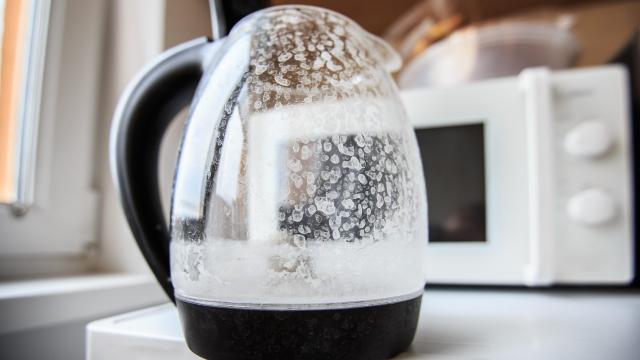When everything is working the way it’s supposed to, you might assume that tap water is pretty consistent across the board in terms of what’s in it, and how it can affect your home and your body. But in reality, that’s not the case. There are multiple ways tap water can differ depending on the community, but today we’re going to focus on one in particular: Hard water versus soft water.
So what, exactly, is the difference between hard water and soft water? And why is this a topic worthy of discussion? Here’s what to know, courtesy of the Water Science School at the United States Geological Survey (USGS).
The difference between hard water and soft water
In short, water hardness refers to the amount of certain dissolved minerals in water. The higher the concentration of the minerals — specifically calcium and magnesium — the harder the water is considered, according to USGS.
If you want to get technical, here’s the breakdown of hard versus soft water, based on its content of calcium carbonate:
- Soft: 0 to 60 mg/L (milligrams per litre)
- Moderately hard: 61 to 120 mg/L
- Hard: 121 to 180 mg/L
- Very hard: > 180 mg/L
Areas that use groundwater as a source tend to have harder water, USGS explains, because as water moves through the rock and soil, it dissolves small amounts of naturally occurring chemicals along the way and brings them along for the ride. In some cases, people with hard water opt to install water softening systems in their homes, which reduce the concentration of minerals in the water.
The effects of hard water
Hard water can impact a number of things in and around your home — including your body. Here are some examples.
In the home
Over time, hard water moving through the pipes of a house can result in scale buildup — gradually causing them to close up, and permitting less water from flowing through, reducing the water pressure, USGS explains.
And when hard water is heated, it can form solid deposits of calcium carbonate, aka more scale buildup. “This scale can reduce the life of equipment, raise the costs of heating the water, lower the efficiency of electric water heaters, and clog pipes,” according to USGS. It’s also what causes the buildup in your coffee maker.
Other examples include:
- Spotty residue or film on dishes washed in hard water
- More soap or detergent required to get laundry clean
- Mineral stains on clothing, or clothing coming out of the laundry still looking dingy
- Mineral buildup around any faucets (including shower heads)
- Residue inside tubs and sinks that is difficult to remove (and usually referred to as “soap scum”)
- A slow-flushing toilet
- Rusty rings in the toilet bowl
- Slow sink and tub drains
On your body
Water is pretty integral to our daily lives, so if it has a high mineral content, it makes sense that it’s something we’d notice. Here are a few examples:
- Hands still feeling slimy after washing them thoroughly with soap and water
- Shampoo not lathering when you wash your hair
- Dry hair and/or hair that feels coated with a film or residue after showering
- Dry, itchy skin
- Alternatively, you’re noticing how much better your hair and skin feel when showering somewhere that isn’t your home
- Metallic-tasting tap water (though that in itself doesn’t make water unsafe to drink)
If you’re noticing any of these things at home, there’s a decent chance you’re dealing with hard water, and may want to consider looking into ways to soften it.

Leave a Reply
You must be logged in to post a comment.